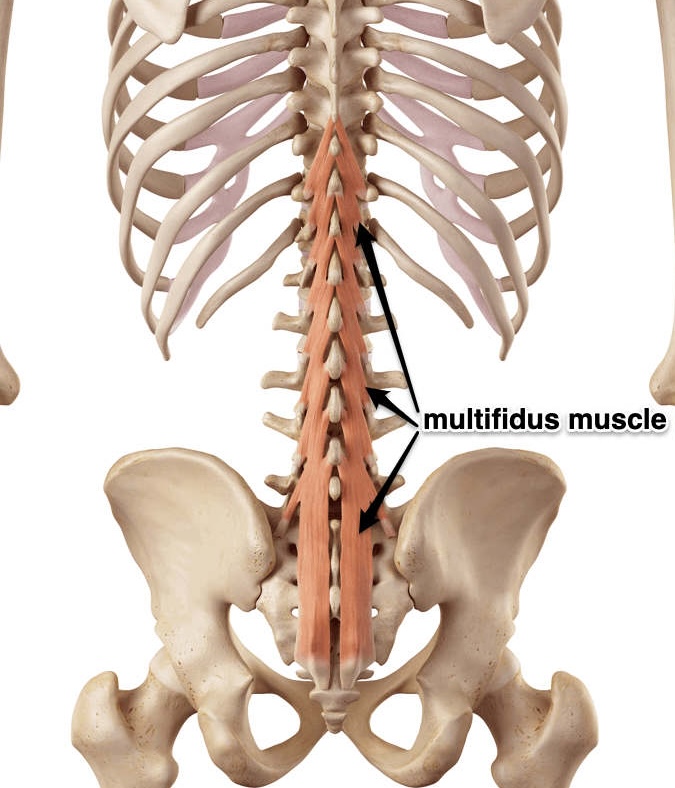Function of the Multifidus Muscles
The multifidus muscles are deep, segmental muscles that run the length of the spine, attaching to each vertebra. Their primary function is to stabilize the spinal column by preventing unwanted movement between vertebrae, especially during dynamic activities. They work in conjunction with other core muscles like the transverse abdominis and pelvic floor muscles to keep the spine stable and well-aligned.

Causes of Multifidus Dysfunction
- Injury: Trauma from a fall or car accident can damage the multifidus muscles.
- Prolonged Inactivity: Extended inactivity (such as during post-surgical recovery or due to a sedentary lifestyle) can weaken these muscles.
- Poor Posture: Chronic poor posture, especially during prolonged sitting or standing, can lead to dysfunction.
- Spinal Conditions: Conditions like lumbar spinal stenosis, herniated discs, or spondylolisthesis may cause the multifidus muscles to be overworked or less effective.
- Prior Spinal Surgery: Surgical dissection of the muscles from the spine (e.g., during decompression or fusion) can weaken the multifidus and replace muscle tissue with scar tissue.
Symptoms of Multifidus Dysfunction
- Mechanical lower back pain: Ranging from a dull ache to sharp, stabbing pain, especially during movement.
- Weakness or instability: A feeling that your back is unstable when bending, lifting, or twisting (e.g., difficulty getting out of bed or rising from a chair).
- Decreased range of motion: Limited spinal movement due to stiffness or pain.
- Muscle spasms: Surrounding muscles may spasm to compensate for weakened multifidus muscles.
Diagnosis
Multifidus dysfunction is typically diagnosed through a comprehensive evaluation including a detailed history, physical examination, postural assessment, and diagnostic imaging studies. Assessing the range of motion and core muscle strength is essential to determine if the dysfunction is present.
Treatment
- Physiotherapy: Targeted exercises to strengthen the multifidus and other core muscles to improve spinal stability.
- Posture Correction: Training in proper posture to reduce strain on the multifidus muscles.
- Manual Therapy: Techniques such as massage, spinal manipulation, or myofascial release to alleviate pain and improve function.
- Core Strengthening: Exercises to enhance overall core strength and endurance for long-term improvement.
- Pain Management: Medications or injections to control pain and inflammation, facilitating better participation in rehabilitation.
- Surgery: For severe, refractory cases, surgical options—such as multifidus stimulation devices—may be considered.
Prognosis
With appropriate treatment and rehabilitation, many people experience significant improvement in symptoms and can return to normal activities. However, continued attention to posture and core strength is crucial to prevent recurrence. Left untreated, multifidus dysfunction may lead to chronic back pain and further spinal issues.
